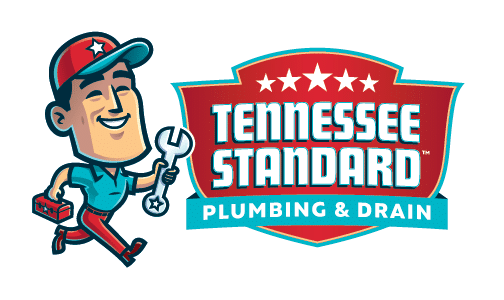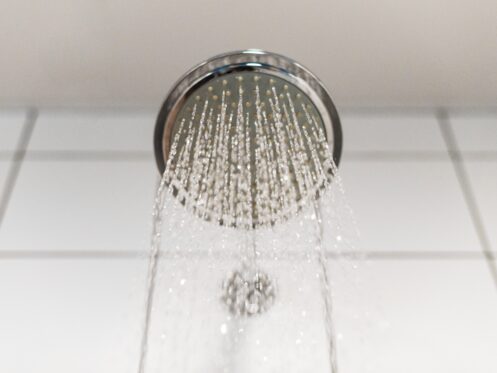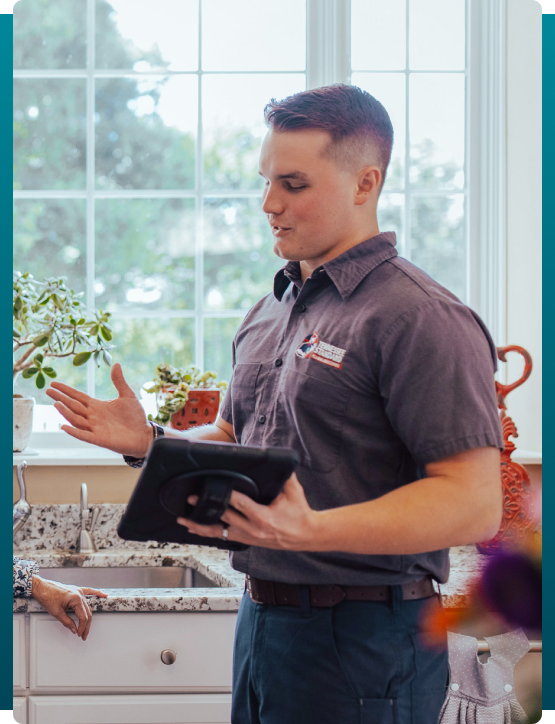According to the U.S. Environmental Protection Agency (EPA), at just one drip per second, a single plumbing leak could waste up to 3,000 gallons of water per year. Although this probably won’t cost you a fortune in water bills, it’s still a good reason to check your Knoxville, TN home for problems like wet flooring, sagging ceilings, and low water pressure.
On its own, low water pressure can pose a significant risk to human health. It’s also a constant source of frustration. From potentially contaminating your potable water supply to decreasing the enjoyment of every shower, low water pressure deserves immediate attention. The following are several common water pressure issues along with tips for fixing them.
What Is Low Water Pressure and When Is It Dangerous?
Acceptable water pressure for your home is between 30 pounds per square inch (psi) and 80 psi. For water safety, the EPA recommends maintaining water pressure at 20 psi or higher at all times. Per the EPA, when water pressure dips below 20 psi, there’s a high likelihood of freshwater contamination as pathogens and other contaminants enter plumbing systems via:
- Damaged pipes
- Pipe joints
- Back siphonage
- Couplings and fittings
Any sudden and significant change in water pressure that drops your water supply lines below 20 psi is cause for alarm. You should report it to both your water company and the EPA. However, even relatively minor, unexplained pressure losses that are ongoing can leave building residents at risk. If you’ve experienced pressure losses at all fixtures and appliances throughout your home, you should schedule plumbing service. Not only is timely intervention best for protecting resident health, but it can also spare you the high costs of repairing damages caused by slow and hidden leaks.
Why Is Water Barely Coming Out of My Faucet?
Single-fixture pressure problems are much less urgent and far less likely to impact the health of building residents. Just remember, single-faucet leaks can still create thousands of gallons of water waste over time.
If your faucet emits a slow trickle when you turn it on full blast, you may be dealing with buildups of hard water minerals such as dissolved calcium and magnesium. Check your faucet for evidence of clogging and corrosion by inspecting its aerator. There may be telltale buildups along the faucet spout and its base.
Although there are many effective do-it-yourself (DIY) techniques for clearing clogged aerators, these tactics won’t address mineral buildups within fixture cartridges or the water supply pipes that lead to them. Odds are, if your faucet aerator is overwhelmed with corrosion, dirt, and rust, other aspects of your plumbing system are too. Thus, it’s best to contact a plumber instead. We can replace the faucet aerator or cartridge, the faucet itself, or damaged or clogged supply line sections.
Check the Faucet’s Shut-Off Valve
It may be that someone in your home has moved the faucet’s shut-off valve into the closed position but failed to reopen it completely. Shut-off valve errors are most common at kitchen sinks given that people often use these valves when troubleshooting connected appliances, such as dishwashers and garbage disposals. However, for single-fixture pressure issues in any room, shut-off valves are always an important factor to check.
Leaky Water Supply Lines
If pressure issues exist at a single faucet or in a single room, the water supply line serving this area may have a leak. Unfortunately, this leak is probably concealed behind drywall and other building materials. Check for:
- Warped baseboards and flooring
- Humidity problems
- Mold and mildew
- Lingering, musty smells
Localized problems with blistered paint and sweating walls could help you pinpoint a leak’s exact location. As with all problems with leaky pipes, once identified, this issue should be handled by a plumbing professional.
The Possible Causes of Whole-Home Issues With Low Water Pressure
If none of your faucets have adequate water pressure, this may be due to:
- Widespread problems with hard water minerals
- Disrupted service from your water company
- Damaged water valves
- A broken or leaking main water supply line
With low-pressure problems affecting the whole house, it’s important to have your water pressure measured by a plumbing professional or measure it yourself. You can measure your home’s water pressure with a low-cost pressure gauge attached to a hose faucet. An ideal pressure reading is between 40 and 60 psi. An acceptable reading is between 30 and 80 psi, and anything below 20 psi is cause for immediate concern.
Sediment and Age-Related Corrosion
Residential plumbing pipes have varying lifespans based on the materials they’re made of and the hardness of water that flows through them. Copper pipes and brass pipes can last seven decades or more, and galvanized steel pipes have expected lifespans of 40 to 50 years. However, galvanized steel pipes are especially prone to hard water buildups and can succumb to sediment-related issues after just two to three decades of service.
Lightweight and durable, PVC or polyvinyl chloride and polyethylene chloride pipes are the top choice for water supply lines throughout much of the nation. Along with copper pipes, PVC pipes have the highest resistance to hard water mineral buildups, but they can still develop them over time.
If your pipes are 20 to 30 years old and your problems with low water pressure developed gradually and appear to be progressive, you may simply need a hard water mitigation strategy such as a water softener. Water-softening equipment will extend the lifespan of your pipes, appliances, and fixtures. It can also help you stave off the need for total pipe replacement if you intervene early enough.
Finding and Fixing Water Supply Line Leaks Affecting the Whole Building
If a water leak is responsible for whole-house changes in water pressure, check for foundation damage, pooling water at the exterior of your home, and soft, muddy terrain where your water supply line travels underground from the water main.
Water supply leaks that exist outside of the building can also have a visible impact on your water quality. Discolored water, foul-tasting water, and water with an unpleasant smell are all signs of possible water supply line leaks.
High Water Pressure Is a Problem Too
Excessively high water pressure is no less of a concern than low water pressure. If your water pressure ever reaches or exceeds 80 psi, much of the water that you pay for will gush down your drains unused. High pressure can also wear down water-reliant appliances like dishwashers and washing machines, cause landscaping damage, and more. It also places unnecessary strain on plumbing systems and could cause fixtures, fittings, pipes, and other features to fail long before their time.
How to Prevent and Resolve Problems With High Water Pressure
The best way to maintain ideal water pressure in your home all of the time is by scheduling annual whole-house plumbing inspections. Yearly visits give us the chance to identify leaks and hard water issues before they spiral out of control. We measure water pressure during these visits while checking for slow and hidden leaks, poor fixture performance, and other pressure-related problems. When needed, we can also install water pressure regulators or pressure limiting valves to restore balance and support optimum plumbing system performance.
We proudly serve Knoxville, TN and the surrounding cities with first-rate plumbing services. We provide leak detection and repair services, gas pipes, water supply lines, sewer line repairs, and water treatment. We also install tankless water heaters. For help regulating the water pressure in your home, contact Tennessee Standard Plumbing today.




